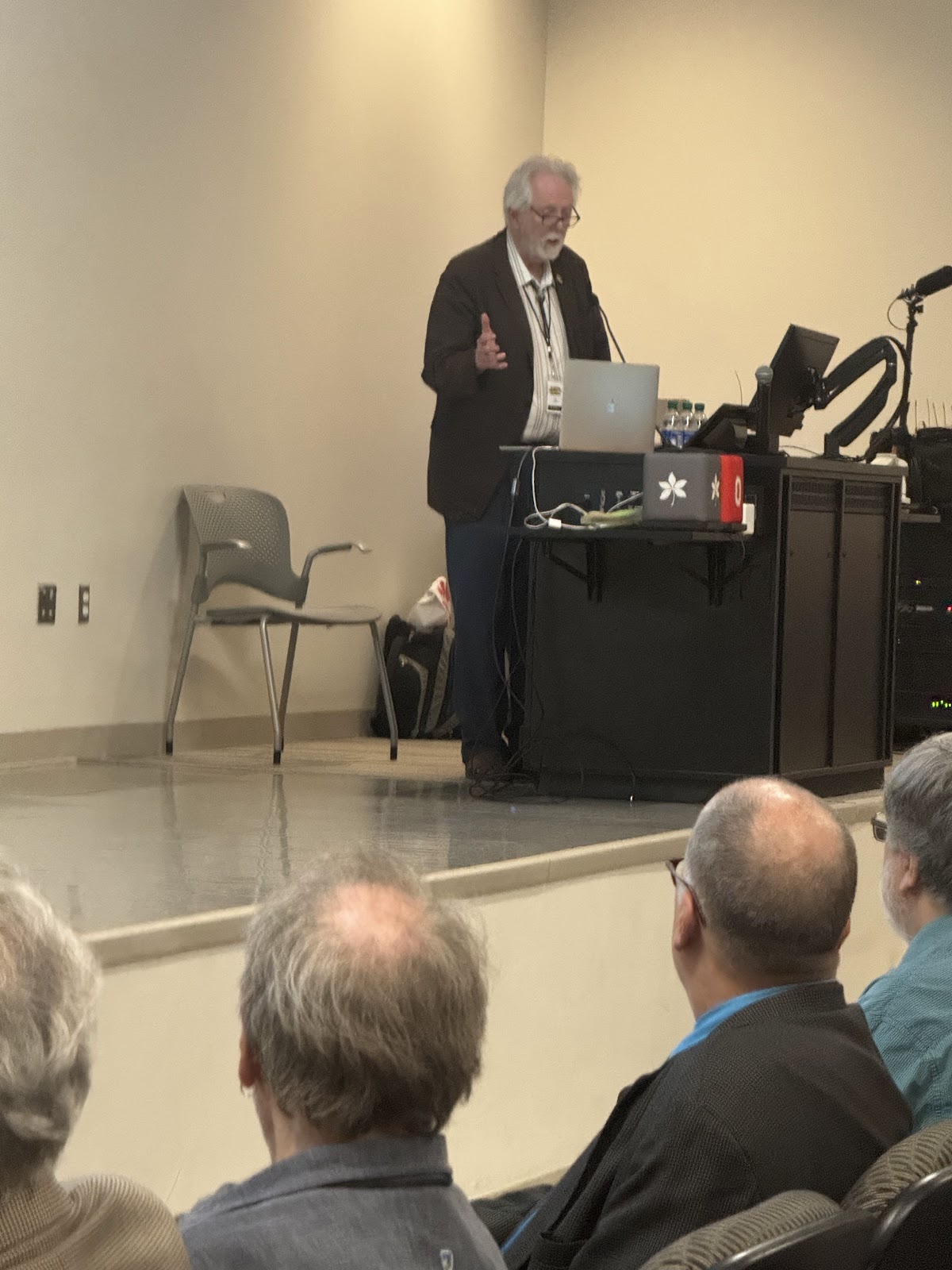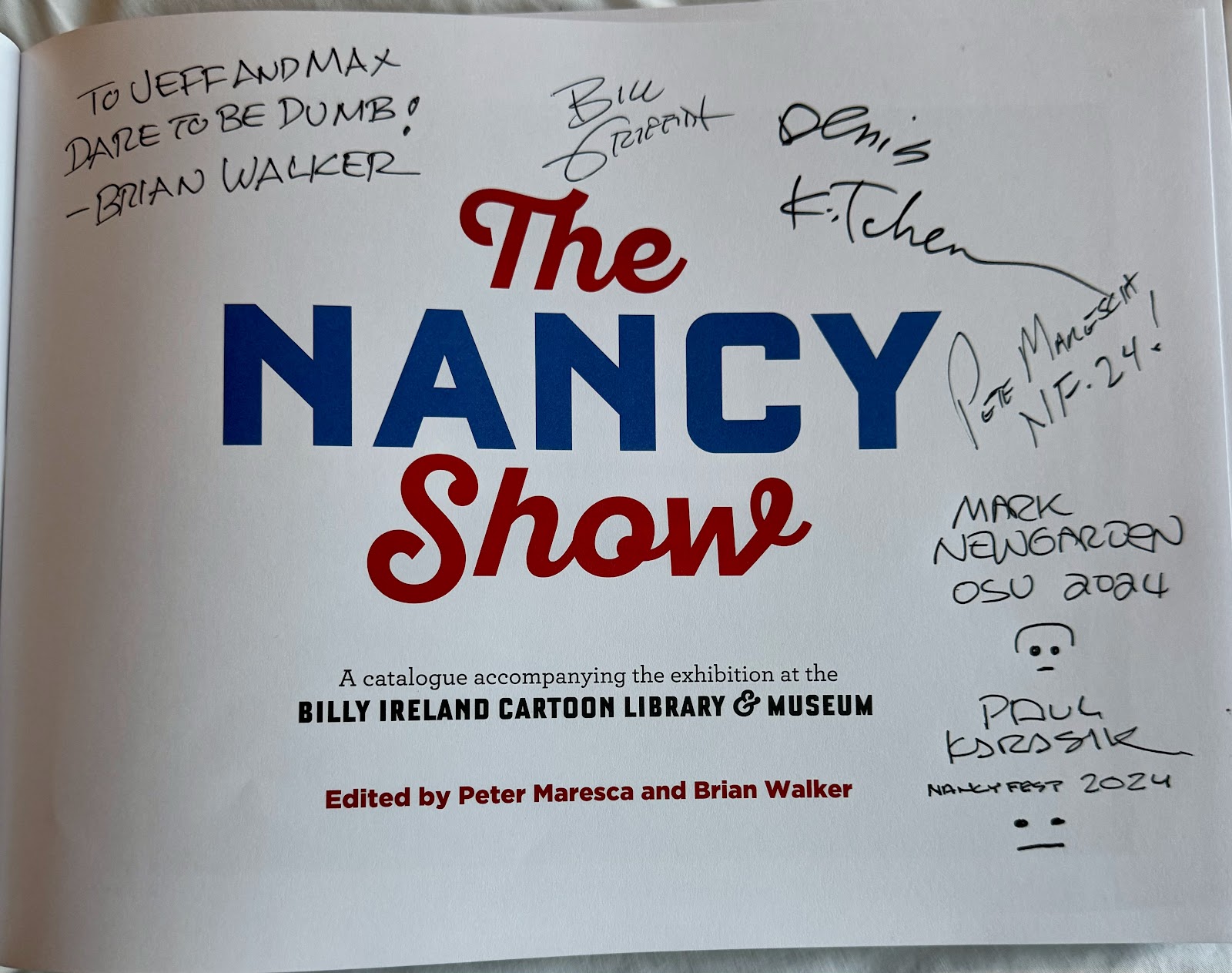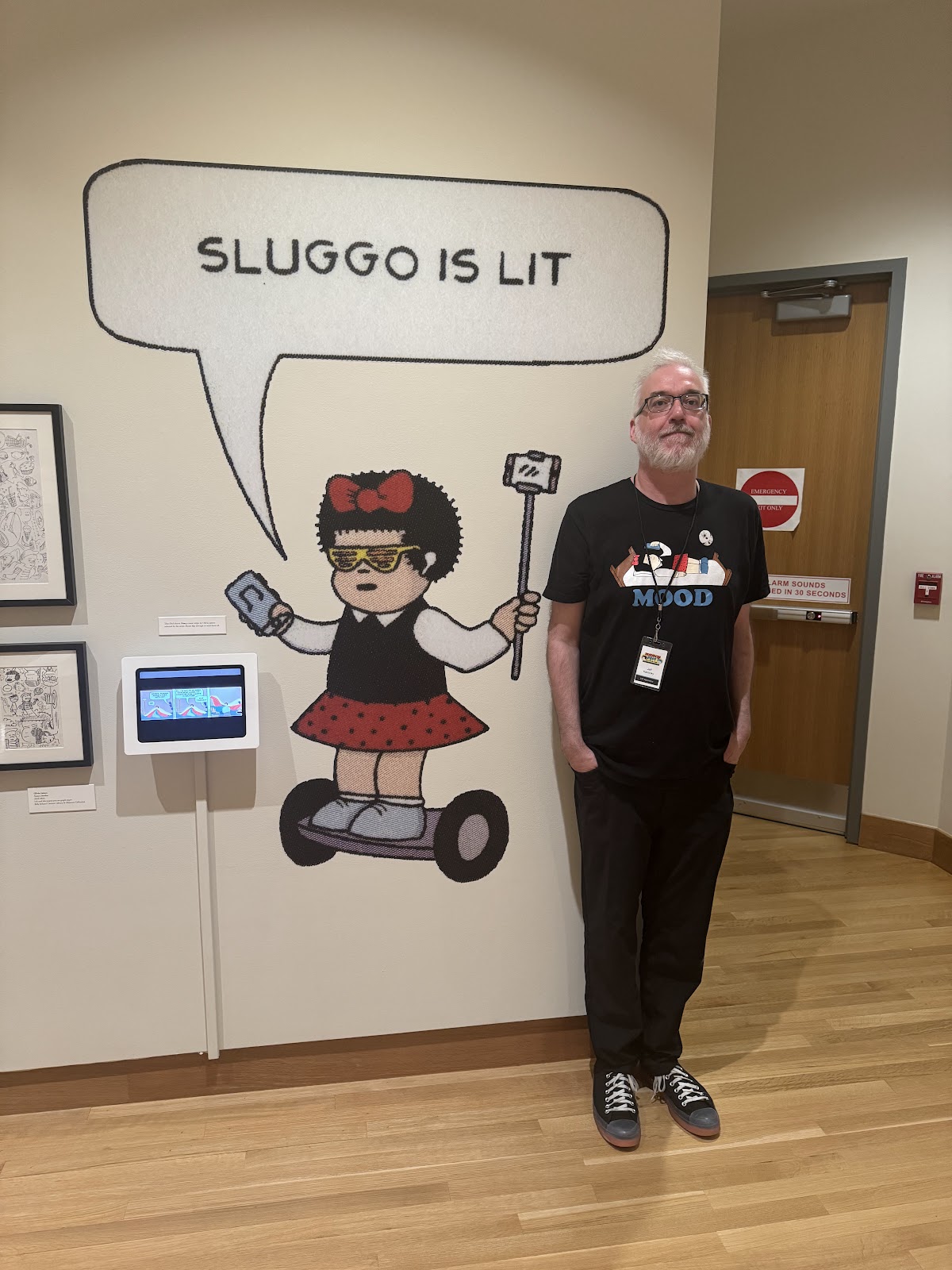Blooming Heads in Jeff VanderMeer’s Recent Fiction
Why a Duck?
Jeff VanderMeer’s Borne cannot seem to end. Less than four months after its April 2017 publication, Tor.com released The Strange Bird: A Borne Story digitally that August. Eight months later, “The Borne Bestiary” appeared online (and was then included as an addendum to the subsequent paperback publication of Borne. In May 2018, VanderMeer was finishing a novella, The Three, also set in the Borne universe. That work has grown into a novel, Three Dead Astronauts, that will be released in 2019 (?). Borne moves backwards in time, too. The Subterranean Press limited edition of The Complete Borne, which was originally slated to include “The Three” as a short story, has now substituted VanderMeer’s 2008 work, “The Situation,” as a “proto-Borne novelette.” Like Area X from VanderMeer’s Southern Reach trilogy, the Borne narrative universe is ever-expanding. The Borne world is “sticky,” in the sense that Timothy Morton uses the term.
Indeterminate, open to change, moving backward and forward through time and space. The Borne-world exemplifies ecologically engaged fiction not through a mimicry or representation of a world in crisis. Instead, it enacts and engages such a world. Our world is in crisis. Borne-world is in crisis. How these two worlds relate to each other is in flux.
Many abstractions work here—fungal, growing, infectious, ecological, unknowable, indeterminate, world-ending, late-capitalistic—be they literary, biological, climate-sciencey, economical, or apocalyptic. But it should not be a question of who can shout HYPEROBJECTS the loudest, of who can say “Anthropocene” is already archaic, that we’ve already moved beyond it. Everything is sticky and everything is in flux. There are no entry or exit points. One just either starts somewhere or one does not start at all.
I will start with a duck, a duck that is not a duck. Toward the end of Borne, as Rachel and Wick make their way across a blighted landscape, they see a bird. “Coming off the plain, we spied a single duck with a broken wing near a filthy puddle. It waddled back and forth in front of the puddle, drank from it, stood sentry, drank again, stood silent. Waiting. A kind of mercy that no one had killed it, that it had escaped notice” (264). The act of spying the duck shows us that Rachel is wrong to say that “it had escaped notice.” She and Wick see it, and she notes it. Rachel means that the duck “had escaped notice” from those who might kill it for food or for a thrill. Regardless, this encounter with the duck is short, almost inconsequential. After noting the duck, Rachel says, “we moved on, toward the Company.” A reader might remember this duck or he/she might not. It’s hard to say. My bet is that the duck did not take up residence in the memory of most of Borne’s readers. Imagine a reading quiz: What animal do Rachel and Wick see as they make their way toward the Company? A Fox? A minnow? Wait, is it a duck? No—it’s a trick question.
What they see is “not a duck.” Or, that’s what they see if you read The Borne Bestiary’s entry “Duck With Broken Wing (p. 264)” which even gives us the page number to re-find the duck. The Bestiary says
Often sighted and also often misunderstood, the duck with a broken wing reported as living alone on the approaches to the Company building is in fact not a duck at all. But none who have approached it have ever lived long enough to report as to its true nature. As a result, ducks have flourished as a species in the City due to a general suspicion and caution. (See also Elongated Elastic Creatures) (11).
Our reading is altered. We, readers, now know something that Rachel, the narrator, did not know. She and Wick dodged a bullet. Had they approached the duck, they would not have lived to report their notice of it. For a reader, this inconsequential detail has acquired great consequence. Had Rachel and Wick approached the duck, their whole story would be different. But we would not know their story because they would not exist. The duck is not a duck at all. But we still call it a duck. We do not know that the duck is unknowable.
Everything is this duck. Everything in Borne-world and everything in our world. The concept of fiction. of reading. Of authorship. Of memory. Of species. Of global warming. Of mass extinction. The “duck with broken wing” that is not a duck can stand for abstraction itself. It is how we grasp something and how it slips away; it is how we know something and how we don’t. It is the success and failure of figurative language. In his essay “The Slow Apocalypse and Fiction,” VanderMeer writes about the ways that fiction might engage hyperobjects, and specifically how it might engage the “slow apocalypse” of global warming. He notes that humans have difficult understanding the many variables, the ways that objects interrelate with each other, at play in global warming.
“For one thing, we are unable to hold in our minds the necessary number of variables and the connections between those variables; thus immobilized, sometimes also misled by disinformation, we rationalize or compartmentalize. In a sense, the enormity of the situation renders us irrational, could also be said to act as an invading agent or alien presence in our thoughts that destroys the impulse toward necessary autonomous action” (9).
We cannot grasp this “invading agent;” we cannot act; we do not know how to respond to this “alien presence” in our midst. VanderMeer does not propose an answer to how we might more effectively engage this presence. Rather, he defines this question as the content of his fiction, as something that he has “irrevocably turned toward” (18) even as it remains a question “without definitive answers” (18). It becomes a question about a question. VanderMeer asks,
“How do we more effectively convey ineffectiveness?” (AS 2). How can he tell us that we do not know a duck that is not a duck? He can do what he does; he can write fiction. In the Borne-world, via duck, we can engage the difficult question of why humans want to destroy the world.
Why do Humans Want to Destroy the World?
(destroy and destory)
Why do humans want to destroy the world? There is a short answer and a series of longer answers. The short answer is disarmingly simple: the Enlightenment and Capitalism. We have been told this time and again, from Marx to Derrida to Haraway. We clearly do not want to listen. In The Mushroom at the End of the World: On the Possibility of Life in Capitalist Ruins
Anna Lowenhaupt Tsing offers as succinct a summary as anyone. ““Ever since the Enlightenment, Western philosophers have shown us a Nature that is grand and universal but also passive and mechanical. Nature was a backdrop and resource for the moral intentionality of Man, which could tame and master Nature” (2). Nature is there; we are here. We want “there” to become “here”. This answer has a lot going for it. It is true. But it is ineffective. That is, knowing that capitalism turns Nature into commodities, and knowing that the Western philosophical tradition has done backflips, first to justify this mastering and then to reject it, only gets us so far. We can define the problem; we can acknowledge the problem. But then we get stuck. We cannot engage the problem, which, it turns out, is not one problem, but many.
Tsing does not offer a solution but something much more modest: a reminder. She writes, “it was left to fabulists, including non-Western and non-civilizational storytellers, to remind us of the lively activities of all beings, human and not human” (2). Those who make things up—fabulists and storytellers—offer words that might imagine something other than progress narratives, something other than tales of mastery. Fiction, then, can offer glimpses of multiple, entangled forms of life. VanderMeer makes a similar claim about how fiction should strive to engage non-human life. “Somehow we need to be humble enough to finally admit to the true complexity of and importance of animal life — not just some anthropomorphic and patronizing sympathy —and in the process continue the necessary step of de-centralizing the human experience” (SA 15). Fiction can imagine non-human centered worlds; novels can present biological complexity that both responds to, simplifies, and exceed the biological complexity of our world. Tsing reminds us that, even though Japanese research institutions have spent millions of yen, it remains “impossible for humans to cultivate matsutake” (4). The complexity of matsutake growth, its relationship to trees and soil, cannot be replicated by humans. To grow, matsutake “require the dynamic multispecies diversity of the forest—with its contaminating relationality” (4). Such “contaminating relationality” resists the logic of agricultural science that seeks to isolate a species from all connection to other things (think of endless rows of corn growing in the Midwest). Tsing’s fabulists understand this “contaminating relationality,” and, in turn, amplify and broadcast it to receptive readers. VanderMeer’s creatures, like his duck that is not a duck, gesture toward a complexity that undermines human centrality in the world. Humans, then, can imagine themselves out of a world of mastery, conquest, and progress and imagine themselves into worlds of contamination and entanglement.
Imagining such worlds can paradoxically offer a reminder that these worlds of contamination and entanglement actually exist. They are not idyllic or nostalgic, though; they are dangerous. Tsing continually argues that humans (and some humans more than others) live in a state of “precarity” and “indeterminancy.”
The world’s climate is going haywire, and industrial progress has proved much more deadly to life on earth than anyone imagined a century ago. The economy is no longer a source of growth or optimism; any of our jobs could disappear with the next economic crisis. . . Precarity once seemed the fate of the less fortunate. Now it seems that all our lives are precarious—even when, for the moment, our pockets are lined. In contrast to the mid-twentieth century, when poets and philosophers of the global north felt caged by too much stability, now many of us, north and south, confront the condition of trouble without end. (7).
Precarity has become the state of all life. Climate science essentially gets ignored, even as it notes with more and more precision the economic, social, and political devastation of global warming. Tsing claims that we must recognize “precarity as an earthwide condition” (8) in order to imagine other possibilities, to look for “life in this ruin” (9) of a world formed by global capitalist practices. In these ruins, Tsing finds matsutake mushrooms, sprouting in human-altered forests, building assemblages that spread nearly unnoticed through the cracks of accumulation and concentration of wealth. She asks “What do you do when the world starts to fall apart?” This question has infinite answers. Tsing’s very localized answer is that she goes for a walk and hopes to find mushrooms, to remind herself that “there are still pleasures amidst the terrors of indeterminancy” (7). Tsing’s walk, though, is not a Thoreauean romantic withdrawal from the world. Rather, it is a way to become part of an assemblage that breaks off in multiple unknown directions. This walk becomes an entry point into the multiple entanglements of The Mushroom at the End of the World. For my purposes, it also serves as both a reminder of and a way into a world, that in the title of VanderMeer’s short story, is “full of monsters,” a world that is not about humans telling stories to other humans, but about stories as alien agents, stories as assemblages that attack us with precarity, with indeterminancy, with ineffectiveness. They grow on us, into us, through us; they are fungal, arboreal, bacterial, viral, bio-mechanical. They can even be dead. Stories infect tellers and tellers transmit infection to readers, listeners, receptors. Through this interactions, stories become “story-creatures.”
What do “Story-Creatures” want?
In Jeff VanderMeer’s short story “This World is Full of Monsters” stories themselves might be the most monstrous beings. The first section of the story “I Did not Recognize What Sought Me” presents “a tiny story” as a living, sentient being that infects the “I,” the narrator who tells us elliptically, “I am a writer . . . I was a writer” (3). The story that the writer encounters was “covered in green fur and lichen” (3). It had “large eyes that could see in the dark, and sharp teeth” (3). It is not a metaphor, not a narrative, but an attacking agent that infects the writer. It bursts out of “the top of my skull in a riot of wildflowers, goldenrod, and coarse weeds” (3). It then grows “roots [that] plunged greedily through my brain and through my soft palate and through my lower jaw, seeking the soil” (4). It grows through the “I” of the narrator; it leaves his body, but only after it has altered the “I” to a state beyond recognition. The narrator loses parts of his memory; his sensory inputs get skewed so that “the world as it had become held a strangeness too vast for me to understand (6). The story-creature spreads the impossibility of understanding through the world. “It did not care about your belief system, your grasp on reality, the excellence of your
analysis or your senses” (16). The “I” continually transforms; it continually waits for “the next thing” (23), the “next part of the story” (23). The “I” does not understand what is happening, but it does absorb “a capacity to understand beyond my actual ability to understand” (17).
And that’s what it feels like to read “This World is Full of Monsters.” I might understand the story; I might read it as a story about the capacity to understand stories. I might disappear into the ether of my own close reading. The story ends with these words. “Now I would be a story-creature and have a world of my own” (24). This could be a dead end of perception dissipated into a world, of story and world inextricably, precariously rooted into each other, forever noting Tsing’s “terrors of indeterminancy.” Stories can only do so much.
In the “Slow Apocalypse,” VanderMeer asks “if you were standing in a hideous post-apocalyptic landscape, would you want me to tell you a story or would you just want me to shut up long enough so you could convert me into edible protein?” (SA 2). I take this question as rhetorical. I would want edible protein. But. Maybe we are in this “hideous post-apocalyptic landscape” already. So maybe the question is not rhetorical. I still want stories, even in the land of what Tsing calls “third nature, that is, what manages to live despite capitalism” (3). Third nature, according to Tsing, often remains invisible when we have been “blinded” by “progress stories” (3). Counter-stories, anti-stories become necessary. Tsing writes “To even notice third nature, we must evade assumptions that the future is that singular direction ahead. Like virtual particles in a quantum field, multiple futures pop in and out of possibility; third nature emerges within such temporal polyphony” (3). Instead of turning the writer into edible-protein, we might want them to spew out all the stories they can, to be a story-creature, a telling and a thing at the same time.
The duck-that-is-not-a-duck shows us third nature. It looks like the narrator’s description of a moment in the transformation of the world.
The terrain became more floating than fixed, the ground covered with a thin stubble of vegetation while the clouds had come close above and turned sea-green and from them tumbled down a forest that hung wrong, the bird-things that were not birds stitching their way through that cover upside down. 11
Everything is messed up and backwards. The whole world is “hung wrong.” We still live in it, though. And we live with “bird-things that were not birds” with ducks that are not ducks.
.




























